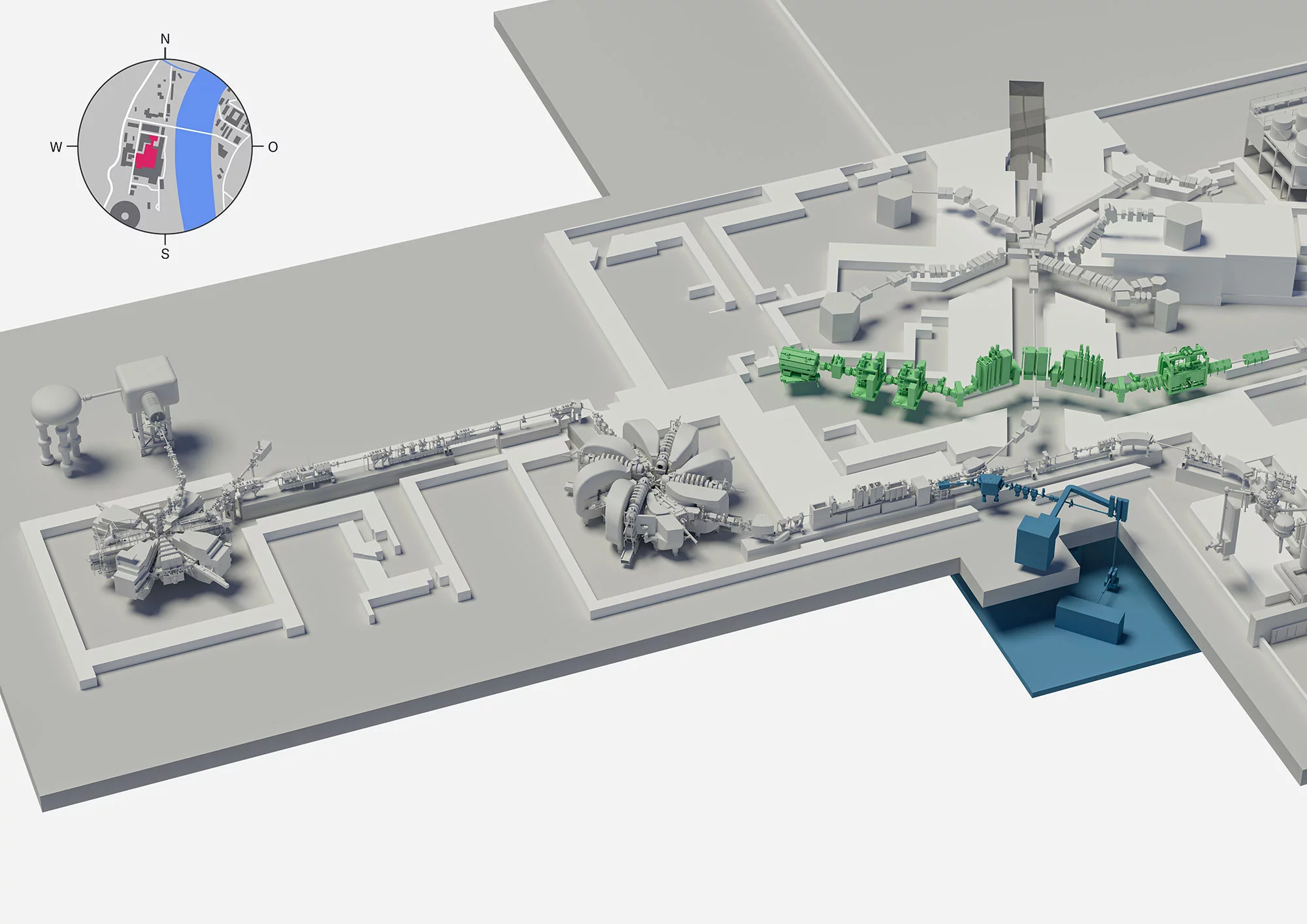HIPA, PSI’s proton accelerator facility, is due for a two-part upgrade starting in 2025. The ETH Board has now put forward the relevant plan for the forthcoming Swiss Roadmap for Research Infrastructures 2023. Preparations for the two-part upgrade are already under way.
The high-intensity proton accelerator HIPA is as high-profile as it is long-serving. It started operating back in 1974 and thanks to continuing refinements it currently delivers one of the world’s most powerful proton beams, at 1.4 megawatt.
Between 2025 and 2028, HIPA is to receive an upgrade. The project called “Isotope and Muon Production using Advanced Cyclotron and Target technologies”, or IMPACT for short, consists of two parts. Firstly, “High-Intensity Muon Beams”, abbreviated as HIMB, involves remodelling part of the facility. The aim is to increase the available special elementary particles, or muons, up to one hundred times, producing an intense beam of 10 billion muons per second.
For the second part of the project, PSI aims to make an even stronger contribution to personalised cancer therapy in future, by building an improved production facility for radionuclides at HIPA. This initiative is called “Targeted Alpha Tumor Therapy and Other Oncological Solutions”, or TATTOOS for short.
The ETH Board has now put forward the overall IMPACT project as an official candidate for the Swiss Roadmap for Research Infrastructures 2023. IMPACT is a joint project of PSI, the University of Zurich and the University Hospital Zurich.
Among the other projects proposed for the roadmap by the ETH Domain, PSI is involved in two more: "EM-Frontiers", which is intended to advance electron microscopy methods, and "SDSC+", which aims to expand the Swiss Data Science Center into a decentralised national digital infrastructure.
Update June 2023: On 2 June 2023, SERI published the Swiss Roadmap for Research Infrastructures with IMPACT now being on it. The roadmap is part of the ERI Dispatch 2025-2028, which the Swiss Parliament will vote on in 2024 and thus also decide on the funding of IMPACT.
Text: Paul Scherrer Institute/Laura Hennemann
Further information
- News on IMPACT
- “A jewel we must treasure” – Interview with Klaus Kirch on HIMB as part of IMPACT, published on 19 December 2022
- Radionuclides for personalised medicine – Interview with Roger Schibli on TATTOOS as part of IMPACT, published on 19 Dezember 2022
Contact
Prof. Dr. Klaus Kirch
Head of Laboratory for Particle Physics
Paul Scherrer Institute, Forschungsstrasse 111, 5232 Villigen PSI, Switzerland
Telephone: +41 56 310 32 78; E-mail: klaus.kirch@psi.ch [German, English]
Prof. Dr. Roger Schibli
Head of Centre for Radiopharmaceutical Sciences
Paul Scherrer Institute, Forschungsstrasse 111, 5232 Villigen PSI, Switzerland
Telephone: +41 56 310 28 37, e-mail: roger.schibli@psi.ch [German, English]
Copyright
PSI provides image and/or video material free of charge for media coverage of the content of the above text. Use of this material for other purposes is not permitted. This also includes the transfer of the image and video material into databases as well as sale by third parties.

